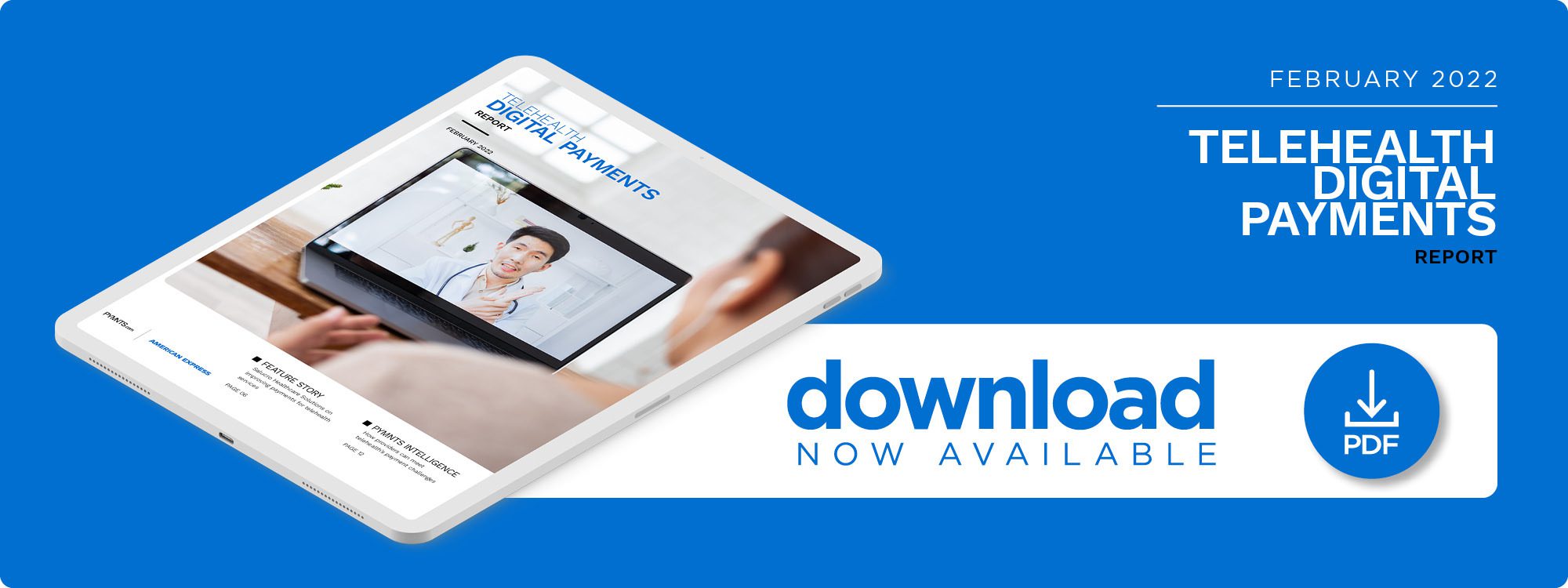Salucro Healthcare Solutions on Improving Payments for Telehealth Services

Sixty-one percent of U.S. households used a telehealth service last year, and providers in the space are racing to retool their payments to keep appointments smooth from start to finish. In the Telehealth Digital Payments Report, Salucro Healthcare Solutions’ Rebecca Truscott explains why telehealth payment solutions must address the nuances of insurance, copays and other industry-specific challenges to be patient-friendly and effective.
Telehealth has existed for quite some time, but it has only become ubiquitous over the past two years as the pandemic raged and in-person doctor’s visits became impractical for many patients. Sixty-four percent of households reported using a telehealth service in 2021, and one-quarter of them cited possible COVID-19 exposure as their primary reason for doing so.
While telehealth services may be convenient from a care standpoint, they carry the same payments complications as any doctor’s visit. Telehealth providers have fortified their payments infrastructures in the past two years in response to this surge in demand, according to Rebecca Truscott, senior vice president of strategy and business development at patient payment and billing provider Salucro Healthcare Solutions.
“The pandemic really acted as kind of an accelerant to ramp up the need for telehealth payments solutions,” Truscott said in a recent interview with PYMNTS. “Telehealth companies have gone from just checking the box on payment integrations to having to look at how they incorporate more robust payment functionality within these telehealth platforms and how they make it work within the healthcare providers’ broader patient payments and billing ecosystems.”
Truscott explained to PYMNTS what patients are looking for when it comes to telehealth payments, why telehealth providers are struggling to meet these needs and how these problems can be fixed by using dedicated healthcare payment platforms.
Challenges With Telehealth Payments
Consumers want their telehealth payments to be as simple as the other payments in their lives, such as eCommerce transactions and everyday bills. Truscott said healthcare providers echo this desire because they want their customers to have seamless payment experiences.
“One thing we hear from a lot of our healthcare provider customers is that they want their patients to have a healthcare shopping experience that’s akin to what they have when they go shop on Amazon,” she said. “The ease of completing the transaction and flexibility in choice are both quite crucial.”
Somewhat counterintuitively, the major obstacle to achieving this is that many telehealth providers are using the one-size-fits-all payment solutions that eCommerce and bill-paying companies are deploying. Healthcare is entirely different, and Truscott said providers that are not using dedicated healthcare payment systems are setting themselves up for failure.
“The biggest challenge that we’ve seen with telehealth payments is the lack of connectivity and integration to providers’ native patient accounting and related patient billing processes,” Truscott said. “What we’ve seen happening with these out-of-the-box integrations, which are generally not healthcare-specific, is that telehealth payments are happening on one platform.
“But, healthcare providers are still running their point-of-service and back-office payments through a different ecosystem. So the revenue cycle, treasury and IT teams end up having to build separate processes around posting and reconciliation for telehealth payments, which has been a pretty big challenge.”
Healthcare providers would be much better served relying on dedicated healthcare payment platforms, which consider healthcare payment challenges like insurance, copays and other complications.
Improving Telehealth Payment Experiences
Ensuring that a payments system can handle the nuances of healthcare transactions is critical to creating a seamless and satisfying payment experience for patients, Truscott said. Patients want payments choice, transparent pricing and an easy transaction process, which are all only possible when using a dedicated payments system.
“We [need to] provide an incredibly high level of configurability,” Truscott said. “We want to make sure that we’re able to deploy our platform and solution wherever the patient would be needing to make that payment, whether that is through an integrated telehealth app, at the point of care using contactless payment types, through a billing statement delivered in a text message or in any other post-adjudication setting.
“Making sure that we’re able to facilitate a transaction at any point across the revenue cycle [is] incredibly important.”
This healthcare payment specialization will likely become more prevalent in the future as patients grow accustomed to telehealth appointments rather than traveling to their doctors’ offices. Meeting patients’ evolving payment preferences will be essential.
“I think we’ll see a lot of telehealth providers really lean in to enabling more advanced payment integration,” Truscott said. “In 2021, we saw roughly 200% growth in the healthcare consumer demand for text to pay when compared to 2019, and 350% growth in demand for popular peer-to-peer payment applications such as Venmo.”
The pandemic is continuing on despite ebbs and flows, and telehealth will likely remain popular even when the health crisis finally draws to a close. Payments technology will need to be top-of-mind for healthcare providers continuing to offer these services.
